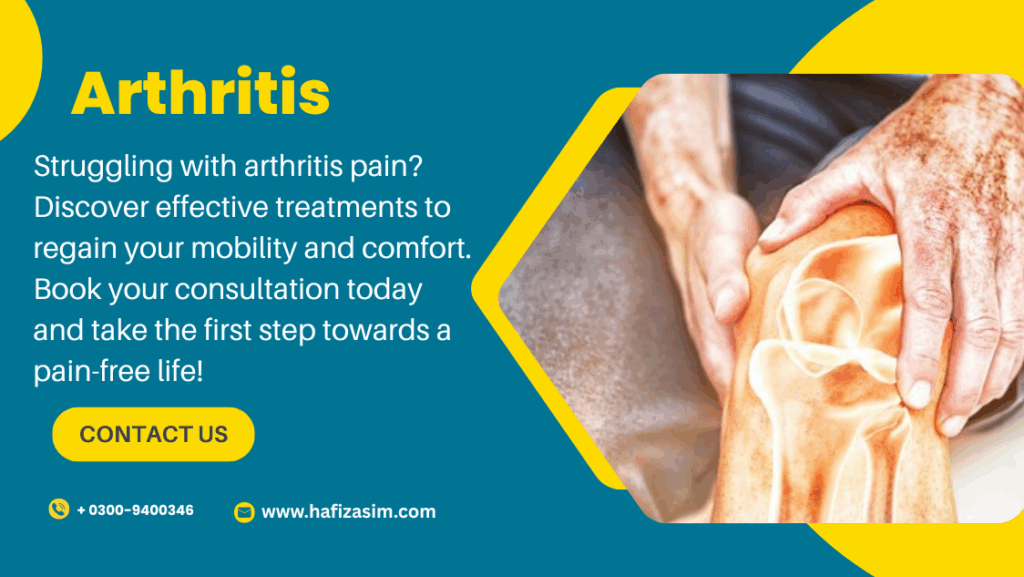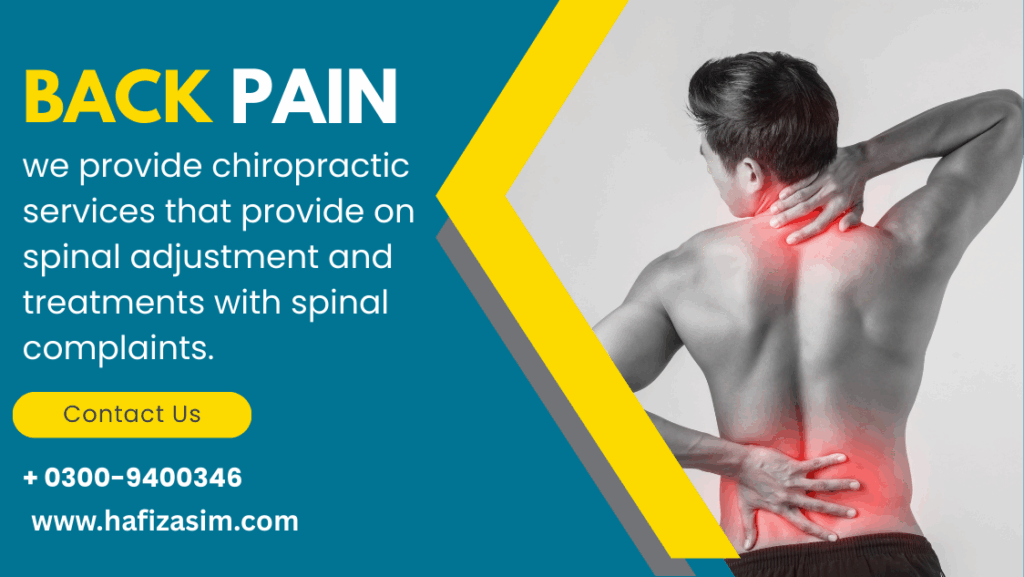Understanding Arthritis: Types, Symptoms, and Effective Management
Introduction
Arthritis is a common condition that causes inflammation and stiffness in the joints, affecting millions worldwide. While commonly associated with aging, arthritis can impact people of all ages, including children. Understanding the condition and its management is key to maintaining a good quality of life.
What is Arthritis?
Arthritis refers to joint inflammation, leading to pain, stiffness, and limited mobility. It isn’t a single disease but a group of over 100 related conditions affecting joints, connective tissues, and surrounding structures.
Types of Arthritis
- Osteoarthritis (OA)
- Often referred to as “wear-and-tear” arthritis.
- Occurs when cartilage, the protective cushion between bones, breaks down over time.
- Commonly affects knees, hips, hands, and spine.
- Rheumatoid Arthritis (RA)
- An autoimmune disorder where the immune system attacks joint linings.
- Causes swelling, pain, and joint deformities.
- Often affects smaller joints first, like fingers and toes.
- Psoriatic Arthritis
- Linked to psoriasis, a skin condition.
- Causes joint pain, swelling, and skin patches.
- Gout
- Caused by a buildup of uric acid crystals in joints.
- Results in sudden, severe pain, often in the big toe.
- Juvenile Arthritis (JA)
- Affects children under 16, leading to joint inflammation and stiffness.
- Ankylosing Spondylitis
- Affects the spine, causing pain and stiffness.
Symptoms of Arthritis
- Joint pain and tenderness.
- Swelling in the affected area.
- Stiffness, especially after periods of inactivity.
- Reduced range of motion.
- Warmth and redness around joints (in inflammatory types).
What Causes Arthritis?
- Age: Wear and tear increase with age.
- Genetics: Family history can predispose you to certain types.
- Injuries: Joint injuries may lead to arthritis later.
- Infections: Certain infections can trigger joint inflammation.
- Autoimmune Factors: The immune system attacking healthy tissues, as in RA.
Diagnosing Arthritis
- Physical Exam: Checking for swelling, redness, and tenderness.
- Imaging Tests: X-rays, MRIs, or ultrasounds to assess joint damage.
- Blood Tests: Detect inflammation markers or specific antibodies.
Treatment Options for Arthritis
1. Medications
- Pain Relievers: Such as acetaminophen or NSAIDs like ibuprofen.
- DMARDs (Disease-Modifying Anti-Rheumatic Drugs): Used in autoimmune types like RA.
- Steroids: To reduce severe inflammation.
2. Physical Therapy
- Customized exercises to improve joint mobility and strength.
- Techniques to reduce stiffness and manage pain.
3. Lifestyle Changes
- Maintaining a healthy weight to reduce joint pressure.
- Low-impact exercises like swimming or cycling.
- A balanced diet rich in anti-inflammatory foods.
4. Advanced Therapies
- Assistive Devices: Braces, orthotics, or canes for support.
- Injections: Corticosteroids or hyaluronic acid for temporary relief.
- Surgery: Joint replacements in severe cases.
Preventing Arthritis
- Stay Active: Regular physical activity strengthens muscles around joints.
- Eat a Balanced Diet: Incorporate omega-3s, whole grains, and leafy greens.
- Protect Your Joints: Avoid repetitive stress and use ergonomic tools.
- Manage Weight: Extra weight strains joints, especially knees and hips.
- Avoid Smoking: Smoking increases the risk of RA and worsens symptoms.
Living Well with Arthritis
- Pain Management: Practice mindfulness, yoga, or acupuncture to reduce pain.
- Support Groups: Connect with others to share experiences and advice.
- Regular Checkups: Work with a specialist to monitor and adapt treatments.
Key Highlights
- Arthritis affects over 350 million people globally.
- Early diagnosis and treatment can prevent joint damage.
- Lifestyle changes, physical therapy, and medications are effective in managing symptoms.
- Maintaining a positive outlook and an active lifestyle is essential for long-term well-being.


